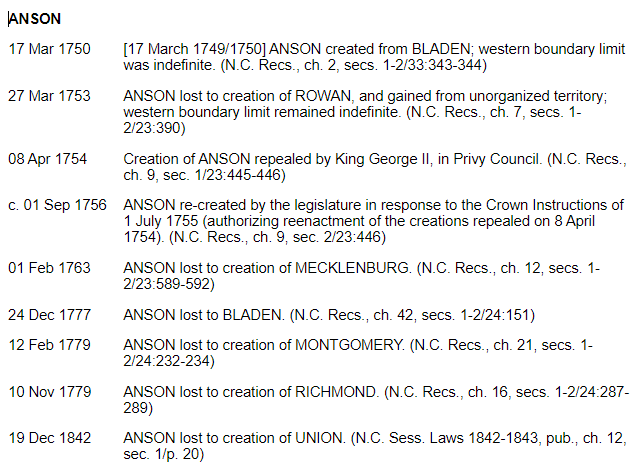We are relieved to report that time still functions as it always has… that we know of. Time has moved forward consistently, never backwards, or in circles. That leaves one explanation; the monument’s move isn’t documented or mentioned in the county’s history. In fact, Mary Medley looks to have intentionally misled readers of her book. The reason for the misinformation in written accounts and the attempt at ‘whitewashing’ the historical record is due to only one logical explanation of how it magically appeared in front of the courthouse dedicated in 1914.
The relocation of this memorial would invalidate any argument against its removal in the future. If anyone were to know about the shift in location to its new position, it would positively confirm what those wanting monuments like this one removed have said they were originally erected to affirm. Those that believe the United Daughters of the Confederacy is an innocent ‘educational’ organization, understand that there education is to achieve a goal that is not peace and harmony. The UDC has celebrated the KKK and misinformed the masses about the cause of the Civil War with a retelling of many specifics that characterize this time when the US violently split.
Anson County was formed in 1750 out of Bladen County, and its original western border was indefinite. It is said to have stretched to the banks of the Mississippi River. Since 1750, several North Carolina counties have been formed from Anson. Rowan, Mecklenburg, Richmond, Montgomery, and finally Union counties were all formed out of Anson County. Andrew Jackson, the hero of the Battle of New Orleans and 7th US President, obtained his license to practice law in its county seat, Wadesborough. The same county seat of today (just without the British spelling), and the same town that was once a banking hub of NC. The Bank of Wilmington and the Bank of Fayetteville are claimed to have kept their money at banks in Anson County during the Civil War. There is an unbelievable amount of history that originated from within the county that unarguably shaped the entire United States. A judge from Anson County was one that presided over a case where a principle called ‘judicial review’ was applied, and that principle was later used by the Marshall court in Marbury v. Madison. This worked to reinforce the three equal branches of government and shaped Constitutional law as we know it.
We’ve observed that parts of Anson County’s history have been documented with minor differences when compared to reality, or some events are completely omitted from the written record due to contradicting a narrative that some would like to maintain. It seems to be a single group within Anson County that act as the ‘Keepers of History.’
It is told that the Confederate soldiers’ monument was erected in front of the Anson County Courthouse and dedicated on January 19, 1906. The cornerstone was laid by Major W. A. Smith on January 13, 1906, and the dedication ceremony was headlined in the Wadesboro newspaper as, “A Glorious Day: The Monument Unveiling a Notable Success.”
Over the lengthy history of Anson County (created 1750), there have been several versions of facilities a county requires to function. Anson County’s current courthouse is actually the sixth version to stand in the county. Only two of those courthouses stood in the same location. This was due to a fire that destroyed the fourth courthouse in 1868. The brick walls of this courthouse remained following the fire, so the fifth was built in its place. The location of the fourth and the fifth courthouses was on the northeast corner of Wade and Greene streets. Both of these courthouses faced south; the fifth courthouse was the one operating in 1906 when the monument was erected.
The image below shows the location and front-facing direction of the fifth courthouse marked with a red arrow. The photos below this image show the very recognizable monument in its original location in front of the courthouse on Wade Street. You can see from the overhead view that the current (sixth) courthouse faces west on Greene Street, just north of where the fifth courthouse stood.
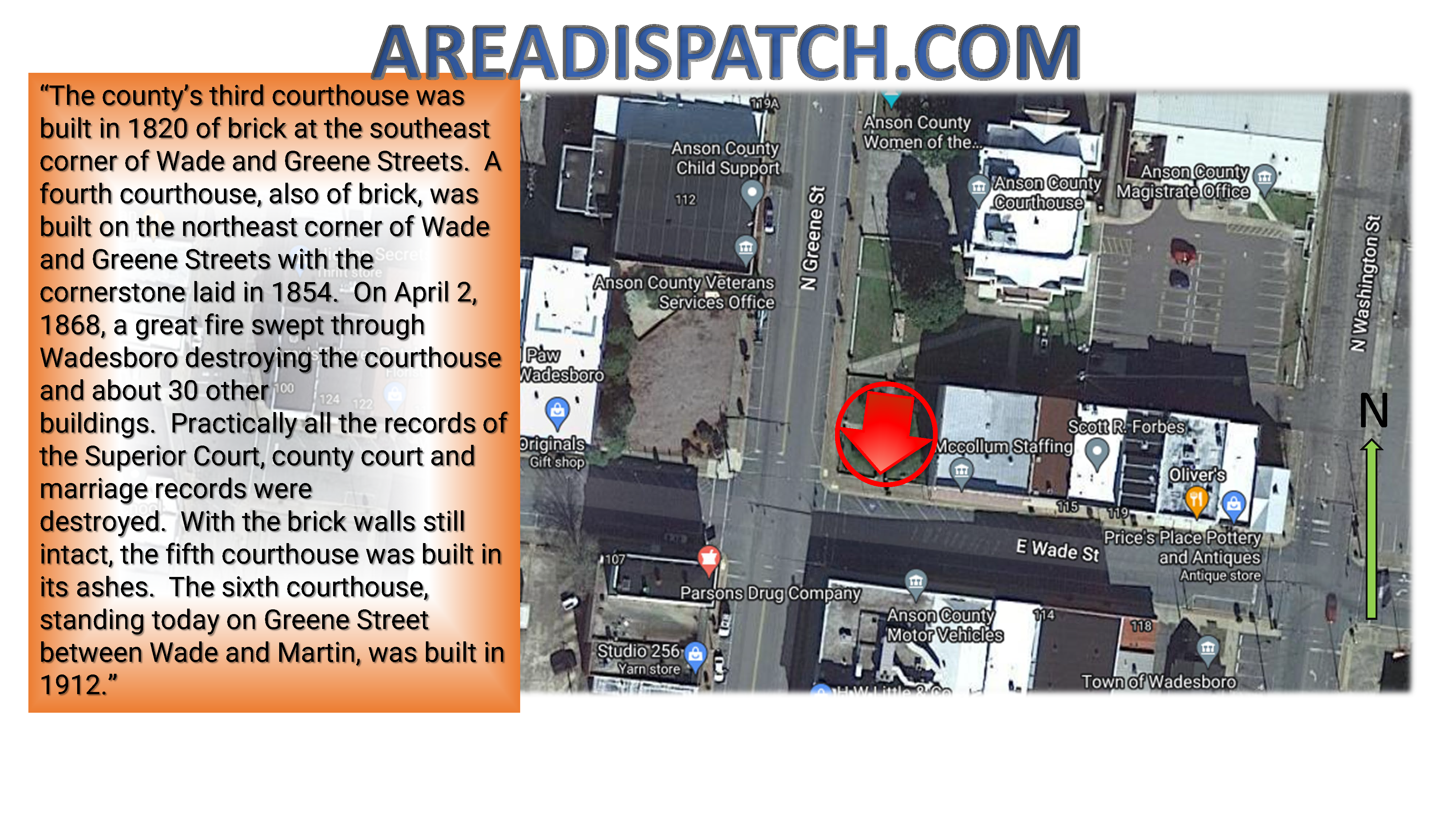
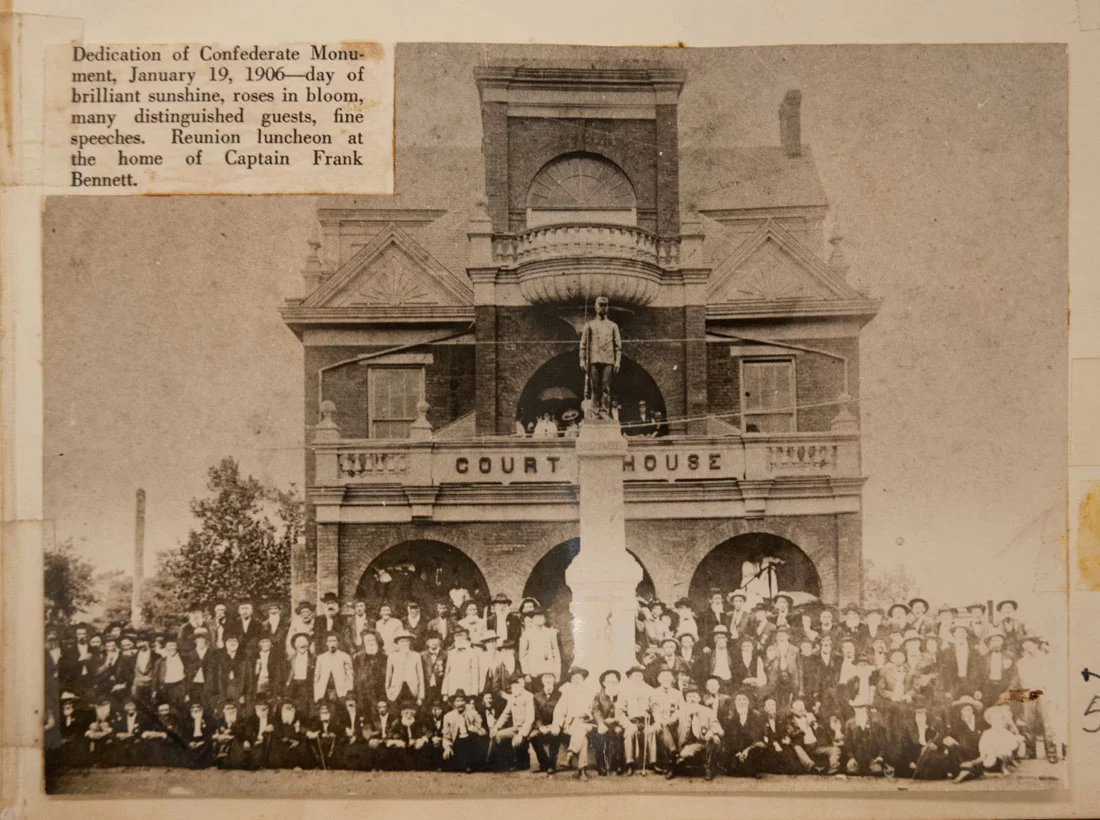
The reports of the unveiling and dedication ceremony being such a beautiful day seem odd due to how much it is being ‘sold’ to the reader. The photo of the dedication above states there were “roses in bloom,” and the Wadesboro newspaper reported the beautiful weather on “A Glorious Day.” It’s a specific description of the day that raises a flag that something is amiss. something happened that day, and it has been omitted from the historical record with multiple reports creating a perception that more than likely doesn’t accurately reflect the events of the day. We may not ever know what really happened during that January in 1906. The 1860 census shows that over 50% of Anson County’s population was enslaved. The racial demographics haven’t changed much since. Was it a protest, a riot, or nothing? It is probable that something occurred and has been omitted from the historical record.
From the Messenger and Intelligencer front page article dated January 25, 1906:
“Everything tended to make the occasion a striking success. The day was bright and beautiful and the programme which had been arraigned was carried out without a hitch.“
$20 there was a hitch?
Another excerpt from the article quoted above:
“At 1030 o’clock the old veterans, grizzled and gray, to the number of more than a hundred, formed in line in front of the library building, the Daughters of the Confederacy forming in the rear. The march was then taken up to the court house, on reaching which the veterans, with uncovered heads, opened ranks and the Daughters, waving Confederate flags, marched through the line into the building.
The courtroom, where the exercises took place, was prettily decorated with Confederate flags, and presented a most animated appearance. Scarcely a foot of standing room was unoccupied, and the handsomely dressed throng of men, women and children spoke well for the high order of the citizenship of the county.”
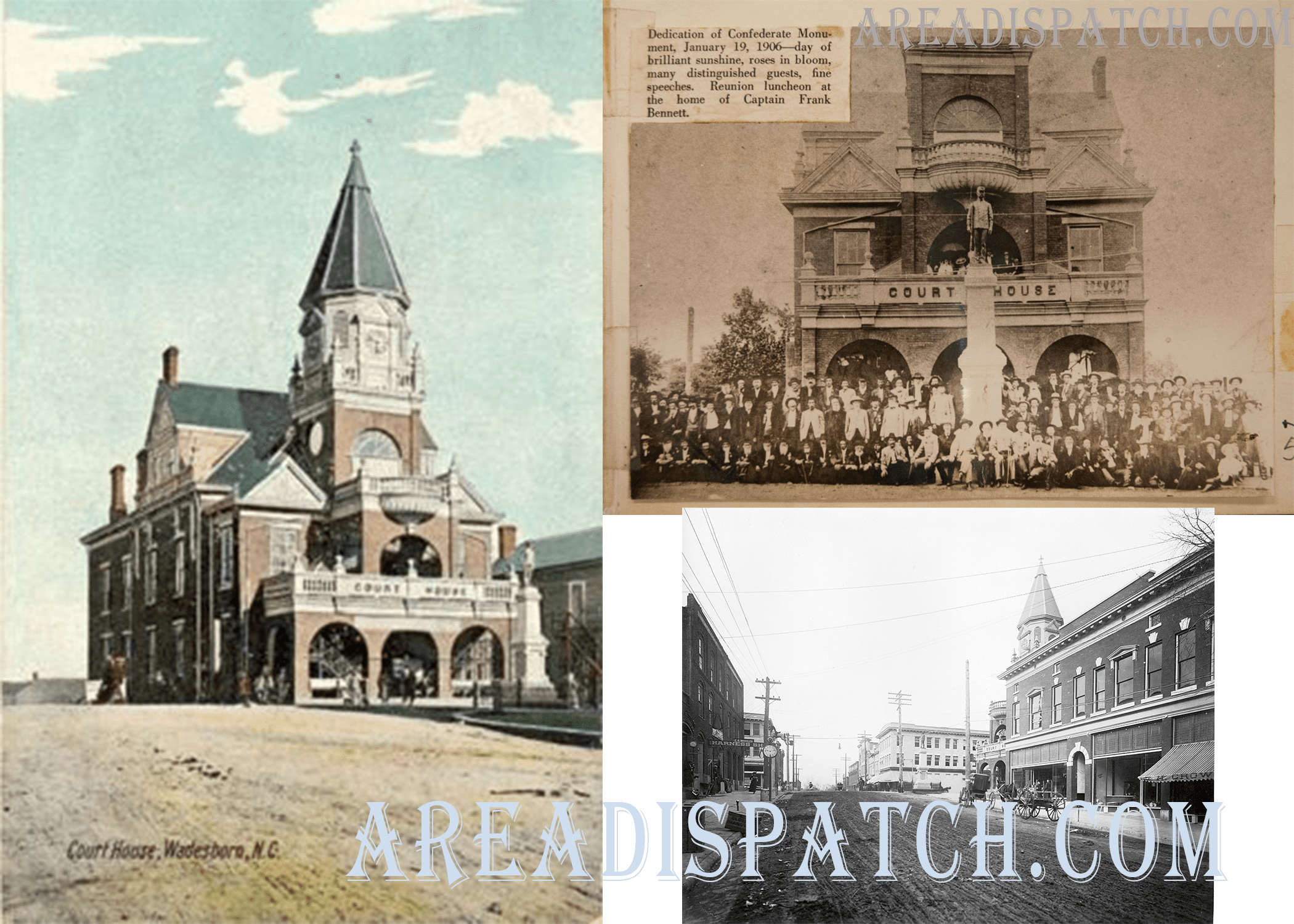
The original location of the soldiers’ monument in 1908 as seen facing west on Wade Street. Below is a photo from what is believed to be around 1911 showing the same perspective, slightly further east on Wade Street.
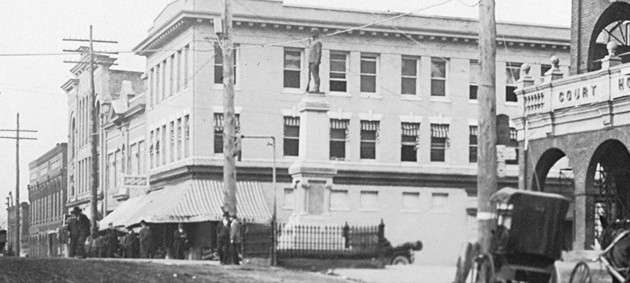

Below you can see an artist’s depiction of the courthouse as construction was nearing completion in 1914, then another artist’s rendering from 1927. At some point during those years, the statue was (re)erected around the corner and down the street from the fifth courthouse. It was undoubtedly moved as a message to the majority of the county’s population of what group held supremacy. This was done without documenting it anywhere and seldomly mentioning the move in oral histories. Documenting the move would certainly be considered written confirmation of the undeniable affirmation in history.

There have been clues in writings and one person said the monument had been moved in 1915. This came from the only person that knew about the monument’s move prior to attention being called to it.


The fifth courthouse was sold to J.W. Odom in 1914, with the dedication and move into the sixth courthouse that year, and Odom immediately tore it down. It is said that bricks from the fifth courthouse were used in the construction of several Wadesboro buildings, our understanding is that the larger share of those bricks were used in the construction of a bakery behind 204 West Wade Street. There was no repurpose use for the land, and the D.A.R. fountain (pictured above) didn’t appear until May, 1922.
The Commemorative Landscapes profile (maintained by UNC University Library) for this monument has inaccuracies in multiple sections. It identifies the only sponsor of the monument as the United Daughters of the Confederacy, and it does not list the monument’s previous location on Wade Street in front of the fifth courthouse. It also leads the reader to believe the monument has been removed when only the statue of the soldier was removed from its pedestal in 2020. The pedestal with the inscription about the Confederate soldiers’ embrace of their leader’s principles and their belief in the social institutions remains. Also, John Randle Richardson was an Ansonville native, not an Asheville native. This statue was probably not modeled after him either. That sounds like the work of Smith creating an attachment for the people to the monument. Several books on covering this monument have noted there is a foundry on the statue. The question about the foundry used for the statue would easily be answered by inspection of the foundry mark.
Please DO NOT tear down any of these monuments after reading this report!!!!!!!!
The United Daughters of the Confederacy or the Sons of the Confederacy, depending on the monument, have insurance policies covering these monuments for exorbitant amounts. Removing these monuments in any way but a lawful one will only make them stronger.
CLICK HERE to see the additional research into ‘The Private Citizen‘ confirmed as the original purchaser and sole provider of this monument.

Did you know that Woodrow Wilson attended Davidson College in 1873 before transferring to Princeton?
Useful Information
North Carolina County Formations Up To Anson
Albemarle 1664 Original county (extinct 1689) Clarendon 1664 Original county [Abandoned by 1667] Chowan 1668 Albemarle [Shaftesbury, 1670-82] Currituck 1668 Albemarle [Carteret, 1670-82] Pasquotank 1668 Albemarle [Carteret, 1670-82] Perquimans 1668 Albemarle [Berkeley, 1670-82] Bath 1696 Original county [extinct after 1724] Beaufort 1705 Bath [original name Pamptecough, 1705-1712] Craven 1705 Bath [original name Archdale, 1705-1712] Hyde 1705 Bath [original name Wickham, 1705-1712] Bertie 1722 Chowan Carteret 1722 Craven New Hanover 1729 Craven Tyrrell 1729 Chowan, Bertie, Currituck, Pasquotank Bladen 1734 New Hanover Onslow 1734 New Hanover Edgecombe 1741 Bertie Northampton 1741 Bertie Granville 1746 Edgecombe Johnston 1746 Craven Anson 1750 Bladen

